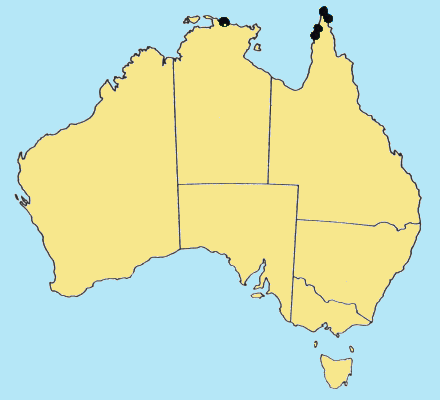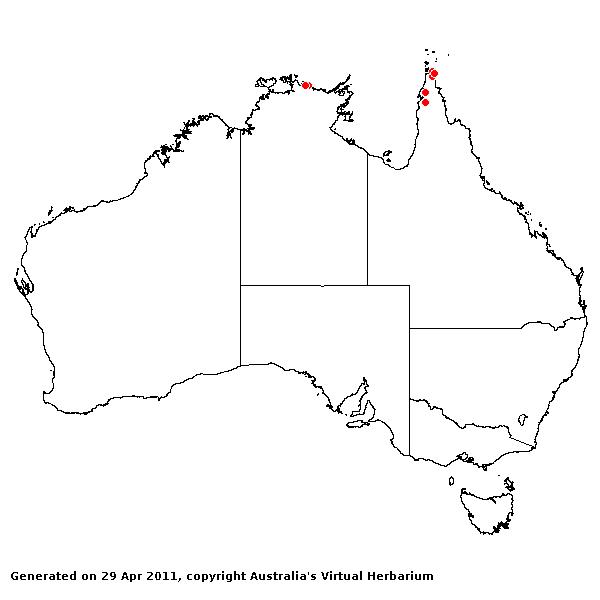Lepturus geminatus C. E. Hubbard. Hooker's
Icon. Pl. t.3233 (1934).
Classification. (GPWG 2001) : Subfamily
Chloridoideae. Cynodonteae.
Type of Basionym or
Protologue Information: Australia, Thursday Is.: Hockings .
Key references
(books and floras): [2002] D.Sharp & B.K.Simon, AusGrass, Grasses of
Australia.
Habit.
Perennial. Stolons present. Culms decumbent, 30–120 cm tall. Ligule an eciliate
membrane. Leaf-blades flat or conduplicate or convolute, 10–23 cm long, 2–7 mm
wide. Leaf-blade surface scaberulous, indumented.
Inflorescence.
Inflorescence solid, a spike. Racemes 1, moniliform. Rhachis fragile at the
nodes.
Spikelets.
Spikelets sessile. Fertile spikelets 1 or more flowered, with 1 fertile floret,
comprising 1 fertile floret(s), with a barren rachilla extension, lanceolate,
dorsally compressed, 5–7 mm long.
Glumes. Glumes
firmer than fertile lemma. Upper glume lanceolate, 5–7 mm long, coriaceous,
without keels, 11–13 -nerved. Upper glume surface smooth, indumented. Upper
glume apex awned.
Florets.
Fertile lemma 3.7–4.3 mm long, without keel, 3 -nerved. Lemma surface
indumented. Lemma apex entire. Palea 2 -nerved. Lodicules present. Anthers 3.
Continental
Distribution: Australasia.
Australian
Distribution: Northern Territory, Queensland.
Northern Territory:
Darwin & Gulf. Queensland: Cook.
Notes.
L. geminatus is distinguished from other members of the genus by its
greater height, shorter moniliform spikes, and by having all except the
terminal spikelet in opposite pairs. The glumes and rachis are pubescent rather
than scabrous as in the other two species.
Endemic;
restricted to the northern part of Cape York Penin., Qld, and to Thursday
Island. Occurring on the inland faces of sand dunes, and on sand within and at
the edges of evergreen vine forests; designated rare.




